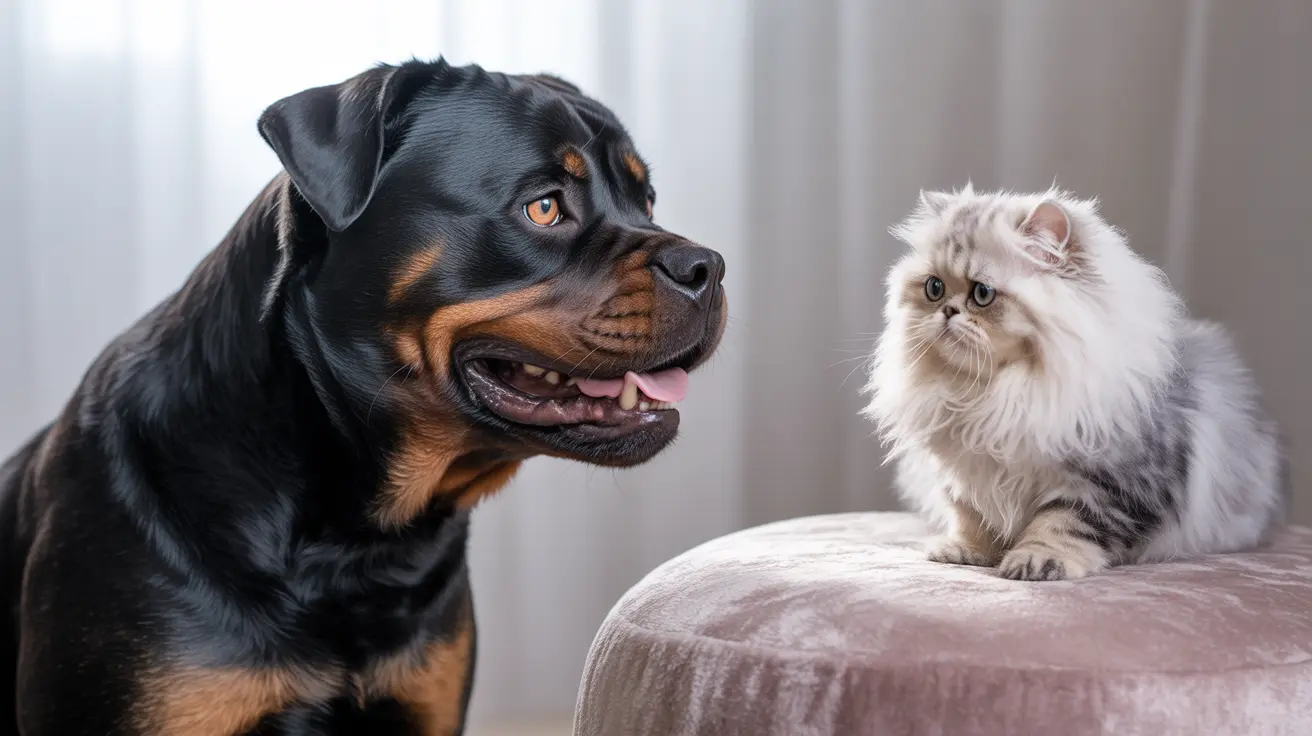Understanding Canine Body Language
Dogs communicate their intentions primarily through body language. When it comes to aggression towards cats, several telltale signs can alert you to potential danger:
Physical Warning Signs
- Rigid body posture with complete stillness
- Intense, unblinking stare directed at the cat
- Raised hackles along the back and neck
- Tail held high and stiff, possibly with rapid vertical movement
- Visible teeth or wrinkled nose
Behavioral Red Flags
- Obsessive tracking of the cat's movements
- Stalking or following the cat persistently
- Lunging or attempting to chase when the cat moves
- Refusing to break focus on the cat even when called
- Muzzle punching or aggressive nose-pushing
Predatory Behavior vs. Play
It's essential to distinguish between playful behavior and genuine aggression. Predatory behavior typically involves:
- Silent, focused stalking
- Sudden freezing followed by lunging
- No play bows or relaxed body language
- Inability to be distracted from the cat
- Aggressive grabbing or biting attempts
Immediate Action Steps
If you notice these warning signs, take these immediate steps:
- Separate your pets immediately
- Never leave them unsupervised together
- Create safe spaces where your cat can retreat
- Consult with a professional animal behaviorist
- Consider installing physical barriers like baby gates
Prevention and Management
Long-term management strategies include:
- Professional training and behavior modification
- Positive reinforcement when the dog remains calm around cats
- Establishing clear boundaries and separate resources
- Regular exercise to reduce prey drive and excess energy
- Proper introduction protocols for new pets
Frequently Asked Questions
What specific body language means my dog might attack my cat?
Watch for a combination of rigid body posture, intense staring, raised hackles, and a high, stiff tail. These signs, especially when occurring together, indicate high arousal and potential aggression.
How can I tell the difference between my dog "playing" with and truly wanting to hurt my cat?
Playful behavior includes loose body language, play bows, and pausing between interactions. Aggressive intent shows through silent stalking, intense focus, and attempts to grab or bite without self-regulation.
What immediate steps should I take if my dog lunges, chases, or growls at my cat?
Immediately separate the animals, create physical barriers, and contact a professional behaviorist. Never punish the dog, as this can increase anxiety and aggression.
Can training, neutering, or behavior modification stop a dog that shows predatory behavior toward cats?
While training and behavior modification can help manage aggression, success depends on the individual dog, the severity of the behavior, and consistent implementation of professional guidance. Neutering may help but isn't a complete solution.
When should I call a veterinarian or professional behaviorist about my dog's aggression toward our cat?
Contact professionals immediately if you observe any serious signs of aggression, if the behavior is new or sudden, or if management strategies aren't working. Early intervention provides the best chance for successful resolution.
Conclusion
Recognizing and addressing signs of dog aggression toward cats is crucial for maintaining a safe multi-pet household. Don't ignore warning signs or assume they'll resolve naturally. With proper management, professional guidance, and careful attention to body language, many dogs can learn to coexist peacefully with cats. However, always prioritize safety and be prepared to maintain separate living spaces if necessary.






